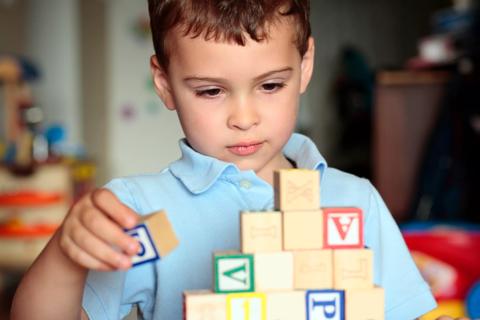How parents and families can make a big difference at home

Of course no parent likes to watch a child struggle in any scenario. For parents of high-functioning children with autism, that struggle often takes place in social situations — in a classroom, on a playground or during a simple conversation.
Advertisement
Cleveland Clinic is a non-profit academic medical center. Advertising on our site helps support our mission. We do not endorse non-Cleveland Clinic products or services. Policy
Thankfully there are many ways you can help your child learn social skills. The work often starts in a therapy session but it does not stop there. With the right understanding and practice you can play a major role in your child’s education. The first rule is to start with the basics — just as your child will.
“Children don’t learn social skills in a bubble,” says behavioral therapist Colleen Muhvic, MEd, NCSP, BCBA.
“What happens in a therapy session matters only if you help once that session is over,” she emphasizes.
For most of us, certain behavior is second nature. Like greeting people when they walk into a room. Making eye contact when we speak. Noticing when a conversation is over.
But for people with high-functioning autism these behaviors are not automatic.
Acknowledging that fact and being patient as your child learns this behavior is a crucial step in moving forward with a relationship rooted in understanding.Taking the extra steps to acknowledge these differences and wrapping them into your own behavior towards your child can be very helpful.
This is a very important step you can take to help. It starts by reading up on your child’s condition, but you can take it even further.
Advertisement
Many social-skills courses include a component for parents, for example. If you have access to such a program you should take advantage of it. The more you know, the better you’ll be able to reinforce social skills when your kids are out in the world.
The language you use with your children is important. They learn by example. Calling a behavior “wrong” tends to set off many children with high-functioning autism, who want only to be “right.”
Instead, talk about “expected” and “unexpected” behavior, which are two terms used in expert Michelle Garcia Winner’s Social Thinking® system. For example, if you’re trying to get your child to focus on a person when having a conversation rather than pacing around and looking elsewhere, explain that people expect attention when they are talking. In other words, give concrete examples of expected behavior that your child can observe and practice.
Social skills aren’t learned in isolation. What happens in a therapy session matters only if you are consistent in helping once that session is over.
For example, if a teacher or counselor establishes a reward system for expected behavior, carry on that reward system at home. Learning social skills is really a three-step process of observation, practice and self-monitoring. You can help most in steps two and three. Be there to support your children as they interact with others. And encourage them when they recognize an expected or unexpected behavior in themselves.
There is no cure for autism. But helping your child understand social skills is a great starting point for a rewarding life. Keep in mind that, with progress, you should use rewards for good behavior less frequently over time. Work with a therapist on the best timetable for this tapering. The idea is that as a child gets better and better at a skill such as conversation, the behavior itself becomes more natural.
“When a child has a successful conversation or makes a new friend, the success is its own kind of reward for that child — and for the parent who gets to witness it.”
Advertisement
Learn more about our editorial process.
Advertisement

Gender norms may lead to women and people assigned female at birth being misdiagnosed

The simple answer is ‘yes’ — but the ‘why’ is much more complex

It could help you feel more empowered and prepared

The many ways parents can help their autistic teen on the path to their future

The short answer from a behavioral psychologist

For starters, parents are not to blame

Presenting yourself differently in different contexts can be both empowering and isolating

If your child is nervous or apprehensive about school, communication is key

Type 2 diabetes isn’t inevitable with these dietary changes

Applying a hot or cold compress can help with pain